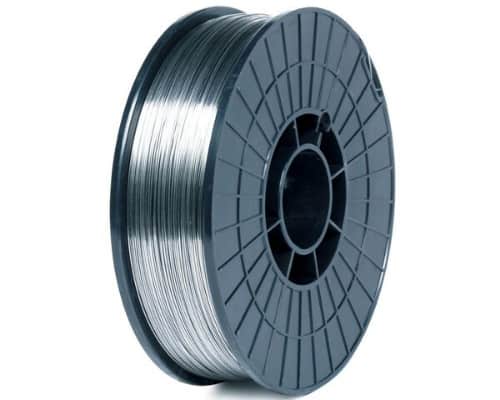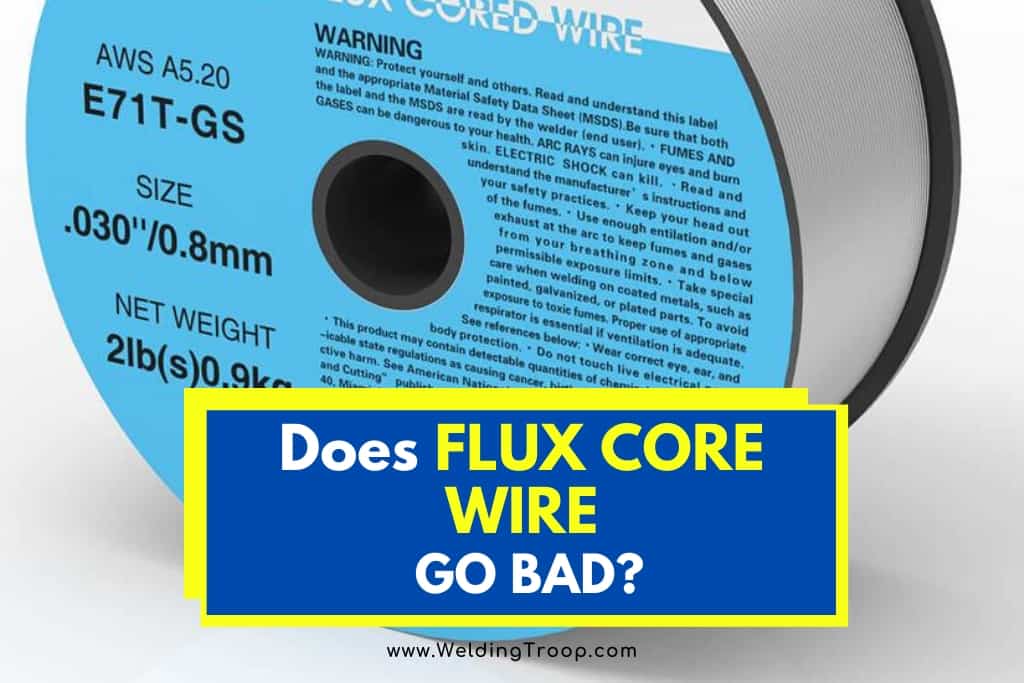Have you ever wondered if flux core wire goes bad? Well, for welders, knowing the lifespan of your equipment is very important. Using wire that has rusted, melted, or gone bad can be detrimental to the work being done. Some types of wire are prone to becoming unusable, while others are not. Flux core wire is commonly used in welding, and it is vital to know if it can go bad and how to know if it’s no longer viable.
Does flux core wire go bad? Flux core wire is not solid, so contaminants such as moisture can enter the wire. So, if flux core wires are exposed to moisture for a long time, they will go bad. The longer the wire is exposed to contaminants, the faster it will deteriorate.
While flux core wire can go bad, it does not merely go bad for no reason or without any signs. There are ways to prevent your wire from going bad and to see the signs and catch it early. As long as you are taking care of your wire correctly, it should remain usable. Read on to learn how to tell if your flu core wire has gone bad and how you can prevent it.
Table of Contents
Why Flux Core Wire Goes Bad
There are a couple of reasons that flux core wire can go bad, but generally speaking, it is because of things in the environment. These contaminate the wire and cause it to become unusable.
Some examples are:
- Moisture: Flux core wire is not solid, so moisture can penetrate it. This moisture causes the wire to oxidize, and in turn, to rust. This can result in things such as weld slag, weld scale, and weld splatter.
- Air: Flux core wires can also be contaminated by oxygen. Since the wires are almost always in contact with oxygen, the air significantly affects them. The oxygen causes rusting. Just like with moisture contamination, this can cause the wire not to be able to join metals as well.
Rusting is the leading reason that flux core wire becomes unusable. Rust can cause all sorts of issues when welding, so you want to avoid it at all costs.

Preventing Flux Core Wire from Going Bad
There are many ways to prevent flux core wire from going bad. By nature, a flux core wire is relatively inexpensive and easy to use, but it also comes with disadvantages. However, like with most things, there is a way to prevent your wire from going bad.
Some things you can use to prevent your flux core wire from going bad are deoxidizers and shielding gasses.
Deoxidizers
A deoxidizer is a substance that counteracts oxygen as the metal cools. This reduces the chances of the metal rusting, all without compromising the integrity of the metal. However, too much deoxidizer in the metal can compromise the stability of the weld. Some deoxidizers are also dangerous to use because of the fumes they emit, such as manganese.
Some good deoxidizers are:
- Silicone.
- Aluminum.
- Titanium.
- Zirconium.
Shielding Gases
Shielding gases are gases that limit your wire’s exposure to the air. In this way, the flux core wire is not as likely to rust. Although, sometimes, a shielding gas may not be necessary. Once you have decided what welding process to use, you can decide if you want to use a shielding gas. Then it comes down to what shielding gas you want to use.
Some of the most common shielding gasses are:
- Carbon dioxide.
- Helium.
- Argon.
Carbon Dioxide
Carbon dioxide is the most common shielding gas that is used. This is because it is very inexpensive, and it can be used in its natural form. However, there are some factors to consider when it comes to the actual effectiveness of carbon. This is because it produces a less stable arc, and much more splatter when mixed with other gasses.
Helium
Helium works in much the same way that carbon does as a shielding gas. There are more downsides to it though, as it is also pretty unpredictable in terms of its actual use. It is also much more expensive than carbon, and you will require much more of it to achieve the same effect as when using carbon.
Argon
Argon is most often used with a mix of metals. Mainly if your weld uses aluminum, magnesium, or titanium, you should probably use one hundred percent argon. This is because the metals are non-ferrous, meaning that they are not magnetic, are more resistant to corrosion, and do not contain iron.
Argon is typically used with the metals stated above because it conducts a very low level of heat. Even though these metals are durable, they are incredibly light-weight, and they do not require a very high amount of heat to manipulate them. This makes argon great for working with them.
Other Factors
There are some other things to consider when it comes to the lifespan of your flux core wire, such as:
- Consistency of the wire: Since no two pieces of flux core wires are the same, any inconsistencies can cause problems. Inconsistencies in the chemistry, wire diameter, and arc performance can affect the wire. This can lead to lousy functionality, operating costs, and overall lousy welding.
- Handling: Taking proper care of your flux core wire can go a long way in reducing the risk of it going bad. Since moisture and air can contaminate the wire, it is best to store them in a controlled and dry storage area when the wire is not being used.
Overall, take good care of your wire, and it will last a long time. There are preventative measures and ways to help its longevity, but simple good practices when storing your wire are necessary for its functionality.
What You Should Do With Bad Wire
If you are in the position where your wire has already rusted and cannot be used, you might think that all you can do is just throw it away, but that is not the case. There are times that parts of your flux core wire can be saved.
There are ways that you can salvage parts of your wire so that it is not all wasted:
- Remove the damaged part: Most often, the entire spool will not be damaged, and that is great. This means you can just cut off the damaged portion and throw that away, and save the rest of your spool.
- Fix it: If you have some terrible wire, another option is to try and restore it. As long as your wire is not completely rusted, but just a bit tarnished, you can fix it up to use again. Using a rust remover is a great way to remove light rusting on your wire, so you do not have to buy a whole new spool.
In Conclusion
When it comes down to it, it is imperative to practice proper storage and maintenance practices for your flux core wire. This way, you can prevent damage before it happens, and if a part of your wire is damaged, you can take care of the rest of it.
If you find yourself with any damaged wire, then do not just shrug it off and use it. Either fix it, take away the damaged part, or just throw the whole thing away. However, do not use damaged or rusted wire, because that will cause several issues for your welding that you would much rather avoid.
Sources:
https://www.dryrod.com
https://www.keenovens.com
More Welding Articles
Can MIG Welders Weld Aluminum? | How to successfully weld Aluminum?
How to Weld Aluminum at Home >> A Beginner’s Guide
Can Steel and Aluminum Be Welded Together?| All You Need To Know
What is Flux Cored Arc Welding? >> Tutorial video

